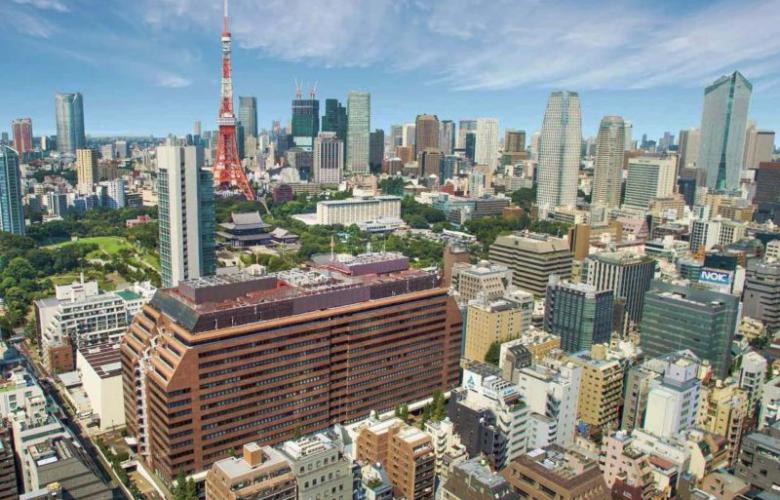JLL's 'The Investor' reveals Tokyo overtook London as the world’s busiest real estate market in the first quarter of 2018, with mega-deals and an unusually positive economic outlook driving demand.
At a glance:
- Tokyo investment volume more than doubled in Q1 2018 to US$9.1 billion
- Japan saw 1.8% GDP growth in 2017
- Shiba Park Building "Battleship" sold for JPY150 billion (US$1.4 billion)
- Foreign investment for Q1 2018 at 17% of transactions compared to 26% for the whole of 2017
Investment volumes in the Japanese capital more than doubled to US$9.1 billion in the three months to March (2017: US$4.3 billion), just beating New York (US$9 billion) and way ahead of third-placed London (US$5.9 billion).
Global deal volumes rose 15% to US$165 billion, making the start of 2018 the biggest quarter for commercial real estate deals since 2007. Asia Pacific transactions rose 34% to US$40 billion.
“On the one hand, sellers are increasingly focused on the slowing rental growth due to expected new office supply, and on the other, high occupancy ratios in existing buildings are driving transaction up volumes,” says Manabu Taniguchi, Research – JLL Tokyo.
Tokyo will see substantial office construction between now and 2020, which is expected to depress rental growth. But in the short term, rents are still rising (1.8% in the 12 months ending April) and Tokyo’s overall office vacancy rate is only 3%. Japan saw 1.8% GDP growth in 2017 and unemployment is down to a record 2.5%, which bodes well for future office demand.
Furthermore, despite rising prices, Tokyo Grade A office capital values are 27% below the previous cycle’s peak in 2007, according to research by DWS. The office yield spread — the difference between the office capitalisation rates and ten-year bond yields — remains attractive at 2.9% in Tokyo, compared to 2.7% in London or around 1.7% in New York, DWS said.
A big quarter generally comes with big deals and this was no exception with the sale of Shiba Park Building, known as the ‘Battleship’. This 1 million square foot, 14-storey office building was sold to a joint venture between utility companies Kansai Electric and Tokyo Gas for around JPY150 billion, or close to US$1.4 billion. This makes it one of the largest single asset deal in Japan’s history.
The building was sold by a consortium of foreign investors, comprising PAG Asia, CV Starr and Asia Pacific Land, which bought it in 2013 for JPY120 billion (US$1.2 billion at that time) after the collapse of owner daVinci Holdings.
Domestic investors were very much at the fore in the first quarter; foreign buyers accounted for only 17% of transactions, JLL research shows, compared with 26% for the whole of 2017.
Japanese real estate investment trusts (J-REIT) were also more active, Taniguchi explains.
“Listed REITs prices have stopped falling so J-REITs gained momentum, backed by improved fundraising conditions. Rebalancing of portfolios in time for the fiscal year end among REITs also contributed to investment activity.”
At the same time, outbound investment by Japanese investors fell sharply to US$240 million in Q1, after substantial outflows of US$34 billion in 2017 (up 70% on 2016). “However, pension funds and other institutional investors will maintain acquisition interest in overseas markets and major developers, trading companies, and private funds will continue to seek opportunities in overseas properties,” says Taniguchi.
He expects Tokyo and other major Japanese cities to maintain investment activity for the rest of this year, with national investment volumes set to increase 5 to 10% from 2017 to JPY4.3-4.5 trillion.
For more information phone or email Takeshi Akagi, Head of Research JLL Japan via the contact details listed below.
Similar to this:
Vietnam economic overview bodes well for 2018 - Colliers reports
New law creates demand for formal workers’ accommodation - Malaysia
Fund to convert Japan's historic architecture into luxury boutique hotels









